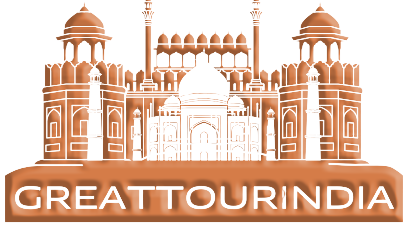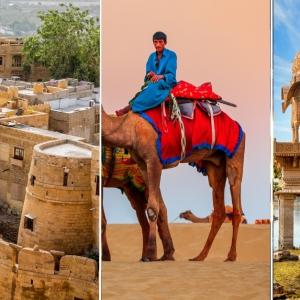Traveling through India is an experience that mixes ancient culture with modern chaos, natural beauty with busy cities, and soulful journeys with logistical challenges. One of the biggest challenges international and even domestic travelers face? Staying connected.
At Great Tour India, we know that communication is essential—whether it’s checking Google Maps in Old Delhi, uploading a sunrise photo from the Ghats of Varanasi, or calling home from a Himalayan retreat. That’s why we’ve created this guide to help you stay online, reachable, and connected during your entire journey through India.
1. Why Staying Connected Matters in India
India’s charm lies in its diversity—but this also means unpredictable infrastructure, varying network coverage, and occasional communication hurdles. A working mobile connection ensures you can:
- Navigate unfamiliar streets
- Book cabs via apps like Ola or Uber
- Communicate with hotels or local guides
- Translate local languages
- Stay active on WhatsApp, Instagram, or email
Let’s dive into your best options.
2. Mobile SIM Cards in India – The Most Reliable Option
Buying a local Indian SIM card is the smartest way to stay connected. The two major players offering good coverage across India are:
- Jio
- Airtel
Both offer 4G/5G data plans, good urban and rural coverage, and international calling options.
Documents You’ll Need
To get a SIM card, bring:
- A passport-sized photo
- A copy of your passport and visa
- Local address (can be your hotel or guesthouse)
Most international travelers can easily buy a SIM at major airports like Delhi, Mumbai, and Bangalore. The process is usually quick, and activation may take anywhere from a few hours to 24 hours.
Best Plans for Travelers
Most providers offer prepaid tourist packages. For example:
- Jio: ₹399 for 1.5 GB/day for 28 days
- Airtel: ₹499 for 2 GB/day with unlimited calls
These are more than enough for maps, browsing, WhatsApp, and occasional video streaming.
3. Wi-Fi in India – Use It, But Don’t Rely on It
Yes, Wi-Fi is available in most cities—but consistency and speed can vary greatly.
Where You’ll Find Wi-Fi:
- Airports and railway stations
- Hotels (especially mid to high-end ones)
- Cafes and co-working spaces in big cities like Delhi, Mumbai, Bengaluru
- Some public places and shopping malls
Pro Tips:
- Always ask for the Wi-Fi password at check-in.
- Speeds may be slower in rural or mountain areas.
- Be cautious with public Wi-Fi—avoid logging into bank accounts or sensitive apps.
If you’re a digital nomad or need strong connectivity, consider carrying your own mobile hotspot or using a strong data SIM as your main connection.
4. Portable Wi-Fi Devices & Hotspots
If you’re traveling in a group or plan to work remotely during your travels, a portable Wi-Fi device can be handy.
How It Works:
Buy or rent a pocket Wi-Fi device that uses a 4G/5G SIM to broadcast a private Wi-Fi network. It lets multiple devices connect, and the connection is usually stronger than public Wi-Fi.
You can rent these from providers like:
- TrawellTag
- Hippocket WiFi India
- Rent ‘n Connect
Or buy one online and insert your Indian SIM card into it.
5. Apps You’ll Need for Easy Travel
Having a good connection is great—but knowing which apps to use will make your life even easier:
- Google Maps – For directions
- Ola / Uber – For local transport
- IRCTC / Trainman – For train bookings
- MakeMyTrip / Goibibo – For hotels & flights
- WhatsApp – For communicating with locals and your tour operator
- Google Translate – Helps you communicate across language barriers
At Great Tour India, our team is always a WhatsApp message away, and we encourage our clients to use these apps during tours.
6. Tips to Stay Connected Without Stress
Even with SIMs and Wi-Fi, things can go wrong. Be prepared with these backup tips:
- Download offline maps (Google Maps allows this)
- Take screenshots of bookings or hotel directions in case you lose signal
- Keep a charged power bank with you always
- Carry a universal adapter or plug converter
- Enable international roaming only as a last resort—it’s very expensive
7. Coverage in Remote Areas – What to Expect
If you’re heading to the Himalayas, rural Rajasthan, or into the Western Ghats, know that network coverage drops significantly in remote areas. Jio usually performs better in remote areas than others, but don’t expect flawless 4G everywhere.
When going fully off-grid (trekking, camping, or eco-tours), inform your loved ones in advance. You may be out of contact for a day or two—but that’s part of the beauty of travel too.
Final Thoughts – Stay Connected with Confidence
India is a land of contrasts, and while the country is modernizing rapidly, staying connected can still take a little planning. With the right SIM, a good data plan, some backup apps, and a little digital flexibility, you’ll stay online and in control of your journey.
At Great Tour India, we go beyond just showing you places—we support you every step of the way. From helping you get a SIM card on arrival to giving you real-time updates through WhatsApp during your tour, we ensure that you’re never disconnected from what matters.
Need Help With SIM Card Setup or Local Tech Support?
Let Great Tour India assist you on arrival. We make sure you’re connected, comfortable, and cared for from day one. Your journey is our commitment.




